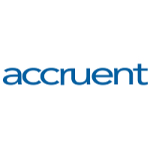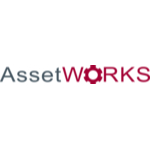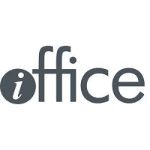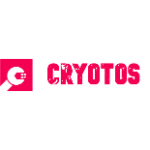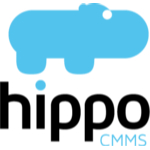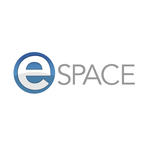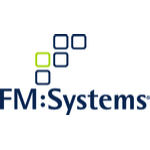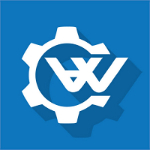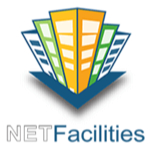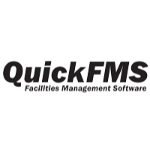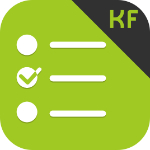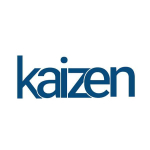TechnologyCounter provides genuine, unbiased real user reviews to help buyers make informed decisions. We may earn a referral fee when you purchase through our links, at no extra cost to you.
List of 15 Best Facility Management Software
Showing 1 - 15 of 92 products360Facility is a software that simplifies facility management for businesses of all sizes. With its user-friendly interface and customizable features, 360Facility streamlines all aspects of facilities management, from maintenance and operations to se...Read 360Facility Reviews
AssetWorks is a leading software company that specializes in providing solutions for asset management. With years of experience and a team of highly skilled professionals, AssetWorks provides innovative is a software solutions to help organizations e...Read AssetWorks Reviews
iOFFICE streamlines and simplifies workplace management by providing an efficient and user-friendly software solution. From space and facility management to employee and asset tracking, iOFFICE offers a range of customizable tools to enhance producti...Read iOFFICE Reviews
Cryotos CMMS is a top-of-the-line software designed to streamline maintenance operations for businesses of all sizes. With its user-friendly interface features, Cryotos CMMS is revolutionizing the way companies manage their maintenance tasks. From tr...Read Cryotos CMMS Reviews
FMX, also known as FileMaker Pro, is a database software that allows users to easily create custom apps for their business needs. Used by individuals and organizations of all sizes, FMX offers a user-friendly interface and a wide range of features fo...Read FMX Reviews
Hippo CMMS - your all-in-one solution for streamlining maintenance operations. From tracking assets and work orders to scheduling and reporting, Hippo CMMS simplifies and organizes your maintenance processes. Say goodbye to chaos and hello to efficie...Read Hippo CMMS Reviews
eSPACE is a software designed to simplify and enhance your facility management processes. With its user-friendly interface and robust features, eSPACE streamlines scheduling, maintenance, and inventory management, saving you time and maximizing effic...Read eSPACE Reviews
FM:Interact is revolutionizing workplace efficiency. This innovative software takes facility management to new heights, streamlining processes and elevating productivity. With its user-friendly interface features, FM:Interact empowers businesses to o...Read FM:Interact Reviews
Hubworks, your all-in-one solution for workplace management. With Hubworks, you can streamline your daily tasks, improve communication with your team, and save time and resources. Say goodbye to juggling multiple software and switch to Hubworks for a...Read Hubworks Reviews
Maxpanda CMMS is a solution for streamlined facility management. This user-friendly software allows you to efficiently track and maintain assets, schedule tasks, and manage work orders. Experience seamless operations and enhanced productivity with Ma...Read Maxpanda CMMS Reviews
NetFacilities is a software solution for all your facility management needs. With its user-friendly interface features, NetFacilities simplifies the process of managing facilities, increasing efficiency and reducing costs. Say goodbye to complicated...Read NetFacilities Reviews
QuickFMS is a highly efficient facility management solution that simplifies the complex task of managing and optimizing workplace operations. With its intuitive user interface features, QuickFMS streamlines processes and enhances productivity for bus...Read QuickFMS Reviews
Kizeo Forms, the ultimate mobile solution for creating and managing custom digital forms. Say goodbye to paperwork and hello to a streamlined, efficient system for collecting data. With its user-friendly interface and powerful features, Kizeo Forms i...Read Kizeo Forms Reviews
NoBrokerHood is a platform that brings convenience, security, and community living together. Say goodbye to the hassles of traditional housing societies with NoBrokerHoods seamless technology that simplifies managing daily tasks, ensures safety, and...Read NoBrokerHood Reviews
Kaizen CAFM is a facility management software designed to streamline and enhance your business operations. With its user-friendly interface and powerful features, Kaizen CAFM is a solution for all your facility management needs. Say goodbye to ineffi...Read Kaizen CAFM Reviews
- What Is Facility Management Software?
- Top Reasons Why Businesses Need Facility Management Software?
- What Are the Top Key Features of Facility Management Software?
- What Are the Top Benefits of Facility Management Software?
- What Are the Steps to Choose the Right Facility Management Software?
- What Are the Types of Facility Management Software for Different Industries?
- What Are the Technology Trends for Best Facility Management Software?
- What Are the Deployment Options for Facility Management Software?
What Is Facility Management Software?
Facility management software is a software solution specifically developed to assist organizations in the efficient utilization and administration of their facilities and assets.
The program facilitates the strategic planning, systematic organization, and efficient management of maintenance activities within businesses' facilities. The utilization of a tracking system facilitates the monitoring and reporting of various actions and resources pertaining to the maintenance of a facility, encompassing tasks such as repairs and preventative maintenance.
Additionally, the program aids firms in enhancing their budget management capabilities through the provision of comprehensive cost analysis reports. Organizations may effectively monitor, administer, and arrange projects and tasks through the utilization of Facility Management system.
In addition, the program has the capability to provide performance reports pertaining to tools, equipment, and staff, thereby facilitating the monitoring of service performance. Organizations can utilize this technology to effectively monitor inventory levels and item prices, hence facilitating informed decision-making on asset management.
Facility management software plays a crucial role in enabling firms to effectively oversee and administer their facilities and assets.
Top Reasons Why Businesses Need Facility Management Software?
1. Streamlines Communication: The utilization of facility management software facilitates the optimization of interdepartmental communication within a business, hence enhancing operational efficiency.
2. Cost savings: buildings management software enables firms to effectively monitor and track expenses related to the maintenance of their buildings, hence offering the opportunity for cost reduction.
3. Optimized Processes: Facility management software serves as a valuable tool for the planning and optimization of many operations pertaining to the maintenance and upkeep of facilities.
4. Visibility and Tracking: Facility management system offers a complete means of monitoring and managing ongoing projects, enabling organizations to maintain real-time oversight of their facilities.
5. Asset Management: Facility management software facilitates the monitoring and administration of an organization's assets and equipment pertaining to their facilities.
6. Automation: Facility management tools serves the purpose of automating various routine processes and activities associated with the maintenance and repair of facilities.
7. Compliance: Facility management system aids firms in ensuring adherence to regulations at the local, state, and federal levels that are linked to facilities.
8. Regulatory Updates: The utilization of facility management software enables firms to effectively remain informed and compliant with the dynamic regulatory landscape by automatically incorporating the most recent revisions in regulations.
9. Vendor Management: The best facility management tools offer a streamlined platform for enterprises to effectively organize and oversee their vendors and contractors.
10. Scheduling: Facility management software offers firms the means to effectively arrange and monitor maintenance operations pertaining to their facilities.
11. Resource Optimization: The utilization of facility management system allows organizations to effectively optimize the resources at their disposal for the management of their facilities.
12. Security: The best facility management tools enables enterprises to enhance the security of their facilities through the implementation of access controls and systems.
13. Data Analysis: Facility management software facilitates the retrieval and examination of diverse data pertaining to an organization's facilities, hence enabling informed decision-making processes.
14. Risk Management: Facility management tools aid firms in effectively managing and mitigating possible risks that may arise from their facilities operations.
15. Reporting: Facility management software offers instantaneous reports regarding the current status and efficacy of diverse facilities, thereby assisting organizations in identifying potential opportunities for enhancement.
What Are the Top Key Features of Facility Management Software?
The key features of facility management software include:
1. Automation: The utilization of a facility management system enables users to streamline and automate several manual procedures associated with the administration of facilities. This enables individuals to optimize their efficiency and conserve valuable time and resources.
2. Schedules & Calendars: Top facility management software enables users to effectively manage and monitor their maintenance and operating schedules and calendars. This practice aids in the timely completion of duties and mitigates the possibility of encountering any delays.
3. Asset Tracking: Asset monitoring enables individuals to effectively monitor and manage the assets present inside their own locations. This facilitates the management of assets by enabling the maintenance of an inventory and the monitoring of their utilization.
4. Work Order Management: Work order management enables facility managers to effectively monitor and handle customer requests, allocate tasks, oversee the progress of assigned work, and ensure timely completion. This practice aids in the timely completion of all customer-related duties.
5. Inventory Management: The scope of the best facility management tools encompasses inventory management, enabling users to conveniently monitor the number and accessibility of various products, resources, and equipment.
6. Reporting & Analytics: The utilization of the best facility management software enables users to generate comprehensive reports and gain access to analytical data. This process facilitates the identification of patterns and enhances operational efficiency.
7. Safety & Security: Facility management software aids users in effectively maintaining the safety and security of their institution. The system encompasses various attributes, such as security monitoring, access control, and alarm systems.
8. Dashboards: Dashboards offer consumers a graphical representation that presents a comprehensive summary of their facility activities. This enables individuals to efficiently oversee the advancement of their activities and implement any required modifications.
What Are the Top Benefits of Facility Management Software?
The top benefits of facility management software are:
1. Increased efficiency: The best facility management tools aid organizations in enhancing their resource allocation, asset management, and service provision. This enables managers to promptly discern issues, formulate remedies, and exhibit more adaptability in their approach to facility management.
2. Cost savings: The utilization of facility management system enables managers to decrease their dependence on manual procedures, leading to a reduction in operating expenses. Moreover, with the enhancement of operational efficiency, organizations have the potential to decrease their capital expenditures and enhance their financial performance.
3. Improved safety and security: Through the utilization of top facility management software, managers have the ability to adopt a proactive approach in enhancing safety and security within their facilities. By means of automated procedures, corporations have the ability to continuously observe data and promptly react to solve any difficulties that may arise.
4. Automated maintenance: The utilization of facility management tools enables managers to automate and optimize their maintenance procedures. This includes the activities of scheduling and monitoring maintenance chores, producing work orders, tracking assets, and generating reports. This intervention contributes to cost reduction and enhances precision.
5. Enhanced communication: Through the utilization of the best facility management software solutions, managers have the opportunity to enhance inter-facility communication among personnel. By use of automated reporting, organizations can guarantee equitable access to information among employees and provide timely notifications regarding significant updates. Moreover, the utilization of facility management system helps facilitate the process of making decisions based on empirical data.
6. Facility planning: The utilization of the best facility management tools can assist managers in strategizing for forthcoming development and enhancements. By leveraging the capacity to retain and effectively handle facility-related data, managers are empowered to make more informed decisions on the financial implications of increasing operations vs adopting more streamlined strategies.
7. Reliability: By utilizing facility management software, organizations can effectively guarantee the dependability and adequacy of their systems in order to fulfill their operational requirements. Managers can effectively respond to market fluctuations and optimize facility operations by leveraging automated processes.
What Are the Steps to Choose the Right Facility Management Software?
1. Identify and assess your needs: The primary and crucial step in the process of choosing an appropriate facility management software solutions entails the identification of the particular type of facility and the unique requirements that need to be addressed. One should contemplate the potential of the program to enhance operational efficiency, minimize expenses, and optimize internal workflows.
2. Research software options: Determine the range of possible possibilities in the market. The search should be conducted for software solutions that possess the capability to seamlessly interact with pre-existing systems, exhibit user-friendly interfaces, and offer robust customer support services.
3. Ask for demos and reviews: Request the suppliers to furnish demonstrations of their software in order to acquire a more comprehensive understanding of the system's capabilities. Consulting client reviews is a recommended approach for gathering insights on the software's reception by users.
4. Make sure the software is secure: Ensuring data security should be of utmost importance while making a decision regarding the appropriate software for one's facility. Determine the security measures implemented by the program provider to safeguard user data.
5. Consider customer service and support: When choosing a software package, it is crucial to ensure that the seller offers high-quality customer service and support. Determine the approach employed by the entity in addressing inquiries and the promptness of their response to any concerns.
6. Compare the pricing plans: Upon conducting a thorough analysis of the many attributes and advantages, it is imperative to delve into the financial implications. Numerous vendors offer adaptable payment arrangements to accommodate varying budgetary constraints.
What Are the Types of Facility Management Software for Different Industries?
There exists a diverse range of facility management software solutions, each offering distinct capabilities that are specifically designed to assist enterprises in effectively managing and enhancing their facilities. Various sectors have distinct requirements for the best facility management software, which are tailored to meet their individual needs.
An instance where a corporate entity could derive advantages is through the implementation of a system that facilitates the monitoring and administration of space utilization statistics pertaining to their facilities.
Healthcare organizations may require software solutions that facilitate the organization and management of patient records, schedules, and other pertinent information. Specialized facility management software can provide a range of additional services connected to facility management.
These services may encompass integrated work-order management, as well as energy auditing and management. Several widely-used facility management systems encompass various functionalities such as facilities maintenance management, space management, asset management, and performance analytics.
Furthermore, software solutions designed for certain industries, such as educational institutions or public service organizations, are frequently customized to meet their distinct requirements in the realm of facilities management.
In summary, it can be inferred that many sectors necessitate distinct forms of top facility management software solutions that align with their specific requirements.
What Are the Technology Trends for Best Facility Management Software?
The best facility management software is distinguished by its capacity to automate procedures, enhance resource coordination, and minimize periods of inactivity.
Furthermore, contemporary facility management tools are endowed with functionalities that facilitate the efficient management of assets, the visualization of data, the customization of workflows, and the analysis of usage patterns.
In terms of technology trends, a few trends stand out:
1. Cloud-based solutions: The utilization of cloud-based solutions in facility management is experiencing a growing trend due to its inherent advantages in terms of flexibility, scalability, and cost-efficiency. Cloud-based solutions offer customers the convenience of accessing and modifying the system using any internet-connected device, but the responsibility for upgrades and maintenance lies with the provider.
2. Automation: The integration of automation is increasingly prevalent in top facility management software, with the aim of optimizing operational processes and reducing reliance on manual user intervention. Automation plays a crucial role in guaranteeing the accuracy of data and diminishing the necessity for manual random inspections.
3. Mobility: The utilization of mobile-friendly facility management systems enables users to conveniently access the system while on the move, hence facilitating technicians in their ability to efficiently analyze assets and timeframes. Furthermore, several systems provide customers the capability to create a visual representation of their establishment and effectively monitor both indoor and outdoor resources.
4. IoT (Internet of Things) integration: Internet of Things (IoT)-enabled solutions possess the capability to seamlessly integrate with the physical infrastructure of a facility, hence enabling users to actively monitor and effectively manage various building functions in real time. This technological advancement facilitates the management of temperature, lighting, and security systems.
5. AI (Artificial Intelligence): The integration of artificial intelligence (AI) into facility management systems has facilitated the expeditious and precise analysis of data by users. Artificial intelligence (AI) has the potential to contribute to the optimization of energy use, the establishment of asset maintenance schedules, and the development of prediction models through the utilization of analytics.
What Are the Deployment Options for Facility Management Software?
There are several potential deployment options for facility management software solutions, including:
1. On-premises deployment: This alternative entails the organization hosting the software solution on its own servers and assuming internal management responsibilities.
This alternative is a favorable choice if the firm is at ease with IT management and prioritizes comprehensive control and system transparency.
2. Cloud-based deployment: This approach entails utilizing a third-party cloud-hosting provider for the purpose of hosting the software solution. The utilization of cloud-based infrastructure obviates the necessity for an organization to independently administer the system on their own servers.
However, this approach necessitates the payment of a recurring license fee and may impose some restrictions on the organization's autonomy over the system.
3. Hybrid deployment: This alternative integrates both on-premises and cloud-based installations. The determination of which components of the software solution should be hosted on-site and which should be hosted on the cloud is within the purview of the organization.
This enables enterprises to enhance their operational flexibility in deploying the system, while also striking a harmonious equilibrium between internal IT management and the utilization of cloud-based services.
